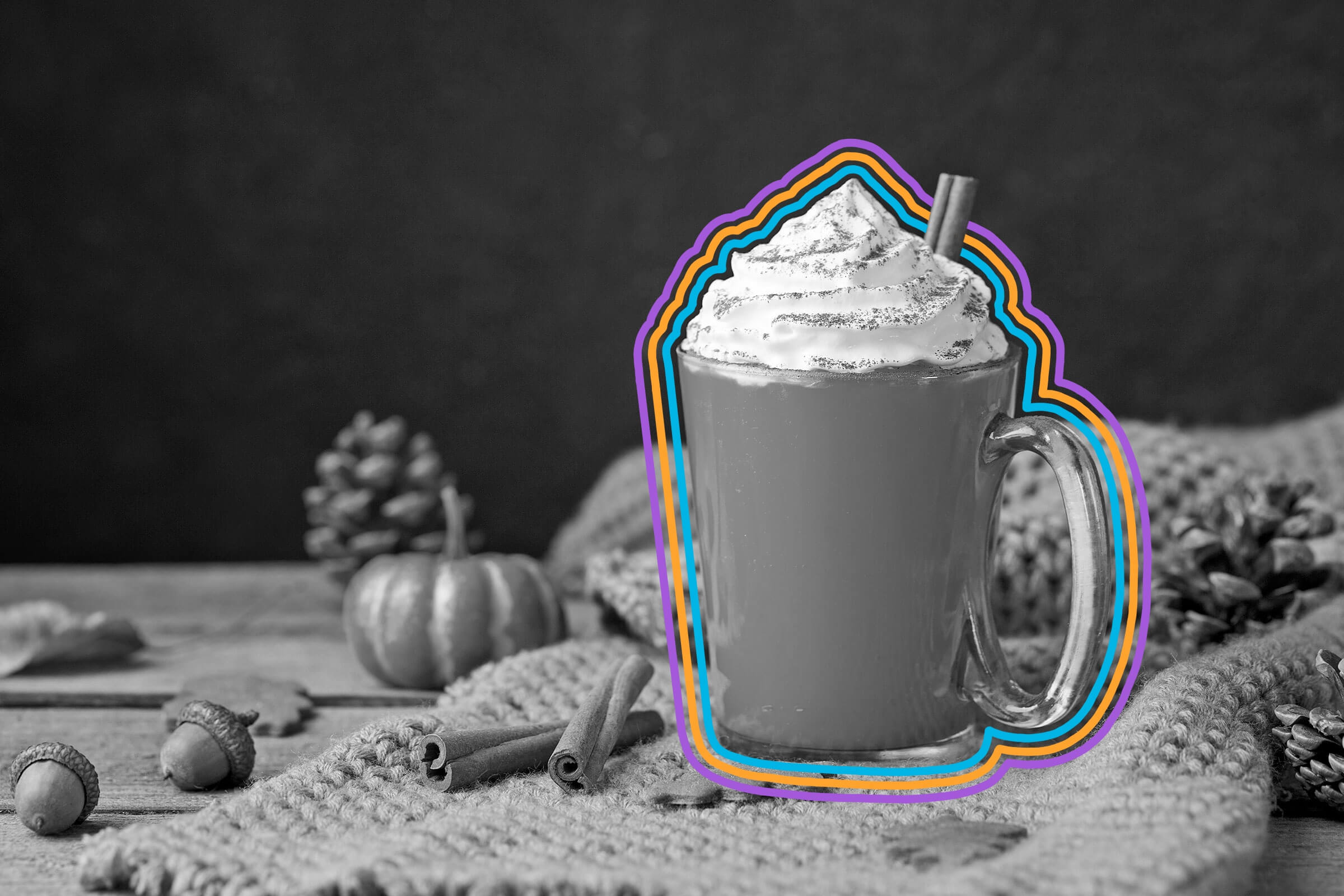

Autumn officially begins on the fall equinox, but increasingly, the cultural start of fall is whenever pumpkin spice becomes available. The warming spice mix — typically including cinnamon, ginger, nutmeg, cloves, and/or allspice — has been associated with the harvest since long before Starbucks debuted their pumpkin spice latte in 2003, but the beverage certainly ushered in the mania for all things pumpkin spice.
That mania has grown far beyond pie or even coffee. Each August, the shelves of supermarkets and menus of coffee shops and bars begin to fill up with pumpkin spice beer, candy, and dog treats. Pumpkin spice Spam even came along in 2019, and Hefty now makes pumpkin spice trash bags.
Think you’re a pumpkin spice aficionado? Test your knowledge on fall’s most iconic flavor with these six autumnal facts.
The Flavor Dates Back Hundreds of Years

People have been mixing together warming spices like cinnamon and ginger for thousands of years — hello, chai! — and this kind of spice set has been associated with pumpkin for centuries. The 1798 edition of American Cookery has two pumpkin pie recipes, with slightly different spice variations, but featuring nutmeg, allspice, and ginger. Branding got involved in the 1930s, when mass-market spice companies such as McCormick’s started selling premade spice blends as “pumpkin pie spice” (and, adjacently, “apple pie spice,” although there’s a wide breadth of opinion on what separates the two).
Starbucks was far from the first to put this autumnal spice blend together with coffee; people have been putting cinnamon, cloves, and other such spices in their java for centuries. But when employees formulated the infamous PSL in the company’s Liquid Lab in 2003, they brought in actual pumpkin pie to develop the flavor (more on that below).
Starbucks Pumpkin Spice Didn’t Originally Contain Pumpkin

Pumpkin pie spice blends are made to spice pumpkin, not mimic pumpkin, and, similarly, the pumpkin spice latte only referred to the seasoning. (After all, it’s not a pumpkin pie latte.) Many pumpkin spice-flavored things don’t contain pumpkin — just cinnamon, nutmeg, ginger, cloves, and sometimes allspice. But after a 2015 refresh, the pumpkin spice latte does contain squash (specifically kabocha). The recipe revamp also removed artificial flavors and caramel coloring and added fruit and vegetable juices. Pumpkin puree is currently the third ingredient in the chain’s Pumpkin Spice Sauce, right behind sugar and condensed skim milk.
The PSL Was Almost the FHL (Fall Harvest Latte)

Before 2003, Starbucks didn’t have an autumnal beverage; their first seasonal drink was the wintertime favorite peppermint mocha. While developing what would ultimately become pumpkin spice, the team in Starbucks’ Liquid Labs brainstormed a bunch of flavors, including chocolate and caramel, which polled the best among customers. Pumpkin wasn’t a runaway favorite, but because customers had indicated it was unique, they kept it as an option. The team members brought in fall decorations and pumpkin pies, alternating slices with sips of espresso to figure out which pie flavors complemented the coffee best.
Once they tried the finished product next to the chocolate and caramel options that were also in the running, pumpkin spice was the clear winner. When it came time to name it, they considered a less obvious name; Peter Dukes, who led the team that made pumpkin spice, said that “fall harvest latte” was in the running.
Most PSL Drinkers Only Get One Per Season

Seasonal pumpkin products bring in a cool $800 million every year, and with all the hullabaloo, you’d think PSL fans would have a Starbucks cup in their hand every day. While loyal customers do come back every year for the autumn ritual, most customers are only getting their fix once or twice a year. According to data from 2015, the vast majority of pumpkin spice purchasers (72%) have just one per year; 20% have two. It’s only the die-hard fans, the remaining 8%, who have a PSL three or more times in a year.
Pumpkin Spice Season Starts Earlier Almost Every Year

No, you’re not imagining it: Festive fall beverages are creeping into your life a little earlier every year. PSL’s original limited rollout in 2003 started on October 10 — practically Christmas, by marketing standards.
The latest release date in the last decade was September 8 in 2015, the year the recipe changed to include real pumpkin. Most years since then it has darkened our door a little bit earlier. 2021 and 2023 have a tie for the earliest Starbucks debut, on August 24.
Starbucks no longer controls the start of pumpkin spice season, though. Competitor Dunkin’ launched its 2023 (pumpkin-less) pumpkin spice latte on August 16. 7-Eleven got an even bigger jump on autumn in 2023, making their take on the pumpkin spice latte available on August 1.
Pumpkin Spice Shut Down an Entire Baltimore High School

One Thursday afternoon in October 2017, students and teachers on the third floor of Cristo Rey Jesuit High School in Baltimore noticed a weird smell — and it was getting stronger. After some people reported difficulty breathing, the school president evacuated the building and called the fire department. The hazmat team arrived and tested for dangerous materials. Finding none, they opened the third-floor windows and took a closer look.
The source of the strange odor turned out to be a plug-in pumpkin spice-scented air freshener in a third-floor classroom — perfectly safe, although perhaps overly air “freshening.”
